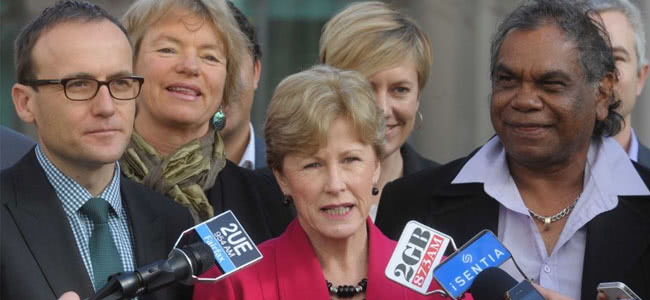While the Federal Government eventually made good on the $1.4 million in funding that community radio needed to ensure the survival of 37 community broadcasters on the digital spectrum, it very nearly signed the death warrant on the community radio sector.
It’s a situation that the Australian Greens Party want to ensure never happens again should they be brought into power, today announcing a $27 million pledge to community TV and radio broadcasters, including $2 million a year towards the digital radio migration for stations and to the Australian Music Radio Airplay Project (AMRAP).
The Government promised an extra $6 million over three years towards the community radio sector in June as a result of pressure from the Commit to Community Radio campaign, spearheaded by Adrian Basso, president of the Community Broadcasting Association of Australia, who says that the Greens’ financial pledge has set the precedent for other political parties to reveal their own commitments in the ongoing campaign towards this September’s election.
“The Greens have thrown down the gauntlet. It’s time for other political parties to show how they plan to support community broadcasters if they win the election,” says Basso. “The Greens plan to provide substantially more funding would support genuine media diversity and make a significant and lasting difference to community broadcasting,” he applauded.
Greens Communications Spokesperson Scott Ludlam announced the news of the $27 million funding policy on Perth’s RTR FM this morning, noting that the Greens pledge includes $2 million towards broadcast training, $12 million per year for the Community Broadcasting Foundation’s rural activities, and $600,000 annually to expand the capacity of AMRAP – which helps push new and emerging talent on community radio. “The Greens have thrown down the gauntlet. It’s time for other political parties to show how they plan to support community broadcasters.”
AMRAP was also nearly made extinct until crucial Government backing arrived at the eleventh hour after pressure from intense lobbying, and much like the digital radio migration, is a key focus of the Greens’ funding commitment. “On average, government provides only 8.5 percent of any community station’s funding,” Greens member Ludlam tells TheMusic, while noting that community TV does not currently receive support thropugh ongoing government funding.
“While meagre funds and small emergency funds are welcomed by this largely self-funding community, given the training, news and entertainment it provides to so many Australians, it deserves the certainty the Greens plan provides,” says Ludlam. “22,000 volunteers keep our community radio and TV stations on the air and investing in their training is an investment in Australia’s digital economy.”
Love Music?
Get your daily dose of metal, rock, indie, pop, and everything else in between.
The CBAA has already pressured other political parties into providing their policies on how they plan to support the community radio and TV sectors, which have a significant impact on the cultural make-up of local and rural areas.
“While the amount of Federal Government funding community broadcasting services receive is very modest, it’s crucial to the sector’s ongoing operation and development. The community broadcasting sector is a smart investment: for every dollar the government puts in, the social outcome is huge,” said Mr Basso, who has reinvigorated the Commit To Community Radio in the weeks leading up to the Federal election. “We’re looking forward to other political parties joining the Greens in recognising that and committing to meeting the sector’s need ahead of the election,” he says.
The campaign trail has also seen other parties show their commitments to music and the arts in the lead up to the all-important election, most notably in Prime Minister Kevin Rudd pledging $560,000 towards the creation of a National Live Music Office, including the enlisting of high-profile musicians as Live Music Ambassadors. While

































